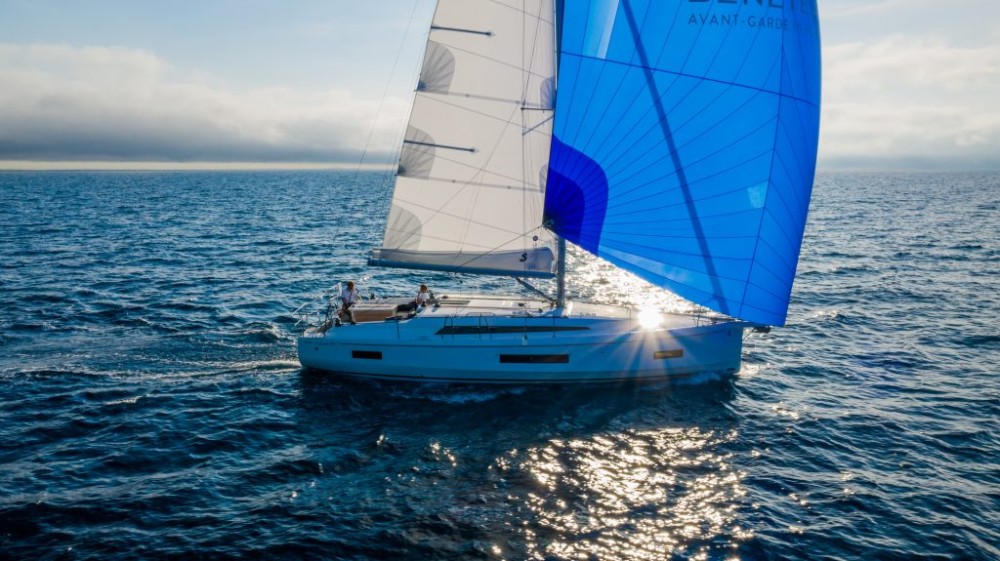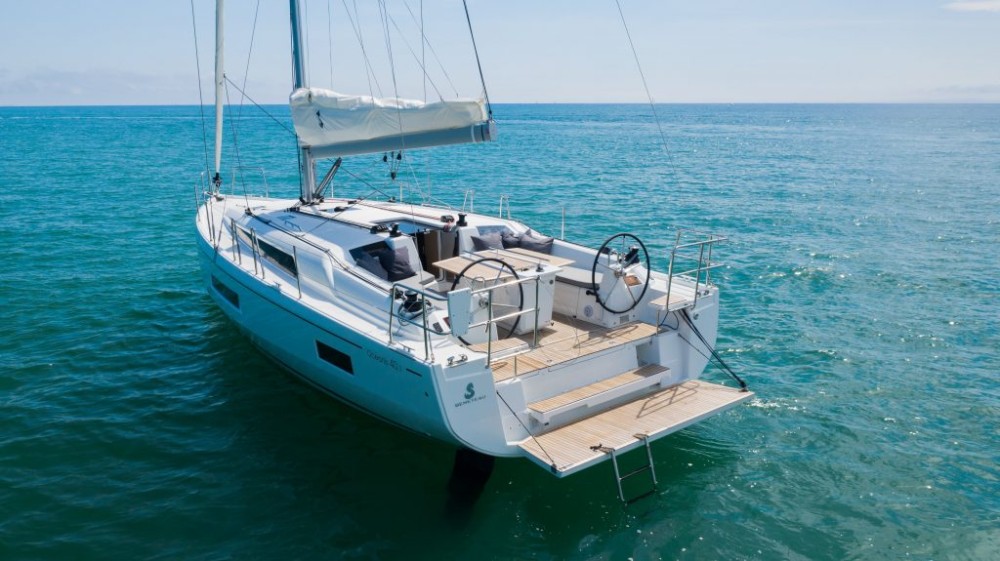Some 3,500 boats cruising the world’s waters today were dreamed up by Marc Lombard. The French naval architect talks to Natasha Gillespie-Wong about his latest award-winning cruiser and his predictions for the future of luxury yacht design.

The first ship shown to be under sail appears on an Egyptian vase from about 3500BC. From Christopher Columbus to the Vikings, boats have been integral to discovery and development for centuries. Nowadays, with the presence of Google Maps and no large land masses left to discover, focus has shifted from housing a large crew for months on end to housing a select few for a few days in luxury.
One man who truly understands the wants and needs of today’s luxury yacht owners is Marc Lombard. The French naval architect studied yacht design at the University of Southampton, and started his eponymous firm, Marc Lombard Design, in 1982.
“I went to America to build a racing multihull for [1978 Route du Rhum winner] Mike Birch with [sailboat designer] Walter Greene, then started to design for racing multihulls in 1982,” Lombard says of his introduction to the industry. “My first cruising boat was in 1990, before which I worked only in the racing field. Since then, I’ve been designing both types of boats, most recently getting into powerboats via the design of powered catamarans.”

In his four-decade-long career, Lombard has created over 250 different designs – from racing yachts and leisure cruisers to monohulls, catamarans and multihulls, it appears there’s no limit to his creativity. Some 3,500 boats cruising the world’s waters today were dreamed up and built by Lombard and his team.
While many still prefer the look and potential speed of performance yachts, in reality the majority of sailors do not cruise particularly fast. Perhaps ahead of his time, Lombard has recently been moving away from monohull racing yacht designs such as the 33ft Figaro II towards family-friendly cruisers with larger interiors.
His Oceanis 40.1, named 2021’s Best Monohull Cruising Boat Under 50 Feet by Sail magazine, offers roomy comfort in two-, three- or four-cabin configurations but doesn’t compromise on speed.

“Architecture is exactly the same job in all types of boats,” Lombard says. “Our job is always to balance comfort, ease of construction and performance. I think that aside from the first impressions, clients need a boat that is fast, easy to use and reliable, and the concept has to be good in the long run.”
Actively influencing the younger generation of sailors, this new style of yachts aims to make life at sea and on mooring more comfortable than ever. For ease of access, Lombard designed and incorporated a transom that converts into an extensive swim platform, allowing users to jump in for a swim whenever it takes their fancy.
When it comes to the future of yachting as a whole, Lombard points to sustainability. “More green material and technology needs to be introduced, as well as limiting the level of excessive energy consumption,” he says, noting that yacht owners, designers and builders alike need to be more conscious of the environment to ensure the destinations they covet remain accessible for generations to come.

Lombard, however, is wary of greenwashing within the industry. “Some proposed ‘green’ solutions are not green at all. For example, hybrid propulsion,” he says, referring to the process of producing electrical energy onboard via a generator and gas oil, storing it and then transforming it into propeller power. While hybrid propulsion would seem more eco-friendly, Lombard says it actually leads to higher consumption of fossil energy per mile and higher CO2 emission in the construction/lifetime/destruction process.
No doubt Lombard will be designing the next generation of yachts with the environment as well as the end user in mind. The one thing he won’t be designing for is the next big fad. “Progress has to be real, not only for marketing,” he says. “I hate fashion and design made only for selling a boat in a show.”
See also: Post-COVID travel: Why private islands are the way to go





